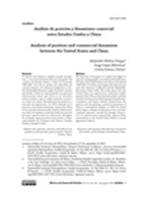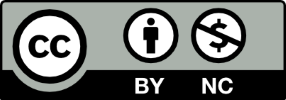Análisis de posición y dinamismo comercial entre Estados Unidos y China
DOI:
https://doi.org/10.32870/mycp.v13i38.871Palabras clave:
apertura comercial, diversificación de productos y de mercados, proteccionismo, Estados Unidos, ChinaResumen
El objetivo del trabajo es analizar el grado de apertura y concentración/diversificación geográfica del comercio entre Estados Unidos y China en el período 1990-2021. Para ello se utilizan dos indicadores de comercio exterior: el Coeficiente de Apertura y el Índice Herfindahl-Hirschman (IHH). El estudio muestra que Estados Unidos ha experimentado una presencia relativamente menor que China en los mercados internacionales, y que en ambas potencias económicas existe una mayor diversificación de productos y mercados de exportación. Derivado de la posición y el creciente dinamismo comercial de China en los mercados internacionales, en 2018 Estados Unidos inició un cambio en la política comercial, desde una posición de mayor apertura, hacia la construcción estratégica de un bloque regional proteccionista frente a China, materializado en el Tratado entre México, Estados Unidos y Canadá (T-MEC).Descargas
Citas
Agosin, M. R. (2009). Crecimiento y diversificación de las exportaciones en economías emergentes. Revista CEPAL, 97, 117-134. https://hdl.handle.net/11362/11274
Agosin, M. R., Alvarez, R., & Bravo-Ortega, C. (2012). Determinants of export diversification around the world: 1962–2000. The World Economy, 35(3), 295–315. https://doi.org/10.1111/j.1467-9701.2011.01395.x
Agosin, M. R., & Chancí, D. (2012). Export Diversification Dynamics in Latin
America. MPRA Paper 44241.
Arrighi, G., Silver, B. J., & Brewer, B. D. (2003). Industrial convergence, globalization, and the persistence of the North-South divide. Studies in Comparative International Development, 38, 3–31. https://doi.org/10.1007/BF02686319
Banco Mundial (s.f). Datos de libre acceso del Banco Mundial. https://datos.bancomundial.org/
Bliss, C. (2003). A Specific-Factors Model with Historical Application. Review of International Economics, 11(2), 268-278. https://doi.org/10.1111/1467-9396.00382
Boyer, R. (2014). Asia, laboratorio de los capitalismos... y de las teorías económicas. Economía: teoría y práctica, (40), 11-28.
Chandra, V., Boccardo, J., & Osorio, I. (2007). Export Diversification and Competitiveness in Developing Countries. World Bank.
Contreras, I., & Molina, A. (2020). Analysis of the trade position of China and the United States to understand the economic conflict. Latin American Journal of Trade Policy, 3(7), 6-18. https://doi.org/10.5354/0719-9368.2020.57865
Durán, J., & Álvarez, M. (2008). Indicadores de comercio exterior y política comercial: mediciones de posición y dinamismo comercial. CEPAL.
European Council on Foreign Relations (2011). China Analysis. One or two Chinese models? European Council on Foreign Relations, Asia Centre.
https://ecfr.eu/wp-content/uploads/China_Analysis_One_or_two_Chinese_models_November2011.pdf
Gazol, A. (2016). Libre comercio: tratados y nuevo orden. Un balance. Economía UNAM, 13(38), 122-130. https://doi.org/10.1016/j.eunam.2016.05.006
Gómez, C. (2003). De Adam Smith a List, ¿del libre comercio al proteccionismo?
Aportes,8(24), 103-113. https://www.redalyc.org/pdf/376/37602407.pdf
Gómez, C. (2013). ¿Ha contribuido el tlcan a la diversificación de las exportaciones mexicanas? Tiempo Económico, 8(25), 57-70.
Gómez, C. (2021). ¿Están concentradas las exportaciones de México? Un análisis comparativo con las exportaciones de Canadá. eseconomía, 16(54), 75-94.
Gómez, C., & González, J. (2017). Competencia y competitividad de las exportaciones de México y China en el mercado estadounidense: nueva evidencia. México y la Cuenca del Pacífico, 6(16), 79-105. https://doi.org/10.32870/mycp.v6i16.522
González, J. (2020). Causas, evolución y perspectivas de la guerra comercial para China. Análisis Económico, 35(89), 91-116. https://doi.org/10.24275/uam/azc/dcsh/ae/2020v35n89/Gonzalez
Guillén, H. (2013). México: de la sustitución de importaciones al nuevo modelo económico. Comercio Exterior, 63(4), 34-60.
Harvey, D. (2005). A Brief History of Neoliberalism. Oxford University Press.
International Monetary Fund (IMF). (2022). World Economic Outlook Database: Abril 2022. https://www.imf.org/en/Home
Khanna, R. (2023). The New Industrial Age: America Should Once Again Become a Manufacturing Superpower. Foreign Affairs, 102(1), 141-154.
King, D., & Stewart, W. (1999). The Political Economy of Neoliberalism: Britain and the United States in the 1980s. In H. Kitschelt et al. (Eds.), Continuity and Change in Contemporary Capitalism. Cambridge: Cambridge University Press, 371–397.
Krueger, A. O. (1997). Trade Policy and Economic Development: How We Learn. NBER Working Papers 5896, National Bureau of Economic Research, Inc. https://doi.org/10.3386/w5896
Kwan, C. H. (2020). The China–US Trade War: Deep?Rooted Causes, Shifting
Focus and Uncertain Prospects. Asian Economic Policy Review, 15(1), 55–72. https://doi.org/10.1111/aepr.12284
Liu, T., & Woo, W. T. (2018). Understanding the U.S.-China trade war. China
Economic Journal, 11(3), 319–340. https://doi.org/10.1080/17538963.2018.1516256
López, J., & Marín, J. (2020). Del TLCAN al T-MEC: consecuencias comerciales y económicas para México. En Contreras, I. y Cruz, M. (Coordinadores). Proceso de apertura y desarrollo comercial en la región de América del Norte (pp. 41-60). Editorial Fontamara y Universidad Politécnica Metropolitana de Hidalgo.
Mattoo, A., & Ruta, M. (2020). Viral protectionism in the time of coronavirus. Voices. https://blogs.worldbank.org/voices/viral-protectionism-time-coronavirus
Milner, H., & Kubota, K. (2005). Why the Move to Free Trade? Democracy and Trade Policy in the Developing Countries. International Organization, 59(1), 107-143. https://doi.org/10.1017/S002081830505006X
Milner, H., & Yoffie, D. (1989). Between free trade and protectionism: Strategic trade policy and a theory of corporate trade demands. International Organization, 43(2), 239-272. https://doi.org/10.1017/S0020818300032902
Morrison, W. (2019). China’s economic rise: History, trends, challenges, and implications for the United States. Congressional Research Service.
Naughton, B. J. (2018). The Chinese Economy: Adaptation and Growth. MIT Press.
OEC. (s.f). Exportaciones. Observatorio de Complejidad Económica. https://oec.world/es
Organización Mundial del Comercio (OMC) (2009). Informe sobre el Comercio Mundial 2009: Compromisos de política comercial y medidas de contingencia. Organización Mundial del Comercio. https://www.wto.org/spanish/res_s/booksp_s/anrep_s/world_trade_report09_s.pdf
Organización Mundial del Comercio (OMC) (2020). Estados Unidos – medidas arancelarias sobre determinados productos procedentes de China. Organización Mundial del Comercio, documento WT/DS543/R.
Osakwe, P. N., Santos-Paulino, A. U., & Dogan, B. (2018). Trade dependence, liberalization, and exports diversification in developing countries. Journal of African Trade, 5(1-2), 19-34. https://doi.org/10.1016/j.joat.2018.09.001
Palley, T. I. (2005). From Keynesianism to Neoliberalism: Shifting Paradigms in Economics. In A. Saad-Filho y D. Johnston. Neoliberalism – A Critical Reader. Pluto Press.
Prada, E., & García, G. (2016). Concentración o diversificación exportadora por destinos: un análisis a través del Índice Herfindahl Hirschmann en Santander, Colombia. Saber, Ciencia y Libertad, 11(2), 111-120. https://doi.org/10.18041/2382-3240/saber.2016v11n2.544
Ricardo, D. (2004 [1817]). Principios de economía política y tributación (Sexta reimpresión). FCE.
Ruiz, P. (2019). México en la disyuntiva económica. Economía UNAM, 16(47), 31-40. https://doi.org/10.22201/fe.24488143e.2019.47.461
Steinberg, F. (2006). La economía política del proteccionismo. Cuadernos de Economía, 29(80), 65-96. http://hdl.handle.net/10486/4527
Suárez, F. (2018). Un gran debate económico a través de nuestra historia, los liberales frente a los keynesianos desarrollistas. Economía UNAM, 15(45), 3-28. https://doi.org/10.22201/fe.24488143e.2018.45.403
Thorsen, D. E., & Lie, A. (2006). Whatis Neoliberalism? Department of Political
Science. University of Oslo.
Villarreal, R., & Ramos, R. (2001). La apertura de México y la paradoja de la competitividad: hacia un modelo de competitividad sistémica. Comercio Exterior, septiembre, 772-788.
World Trade Organization (WTO) (2021). Informe sobre las medidas comerciales del G20. https://www.wto.org/english/news_e/news21_e/report_trdev_jun21_e.pdf

Publicado
Versiones
- 2024-11-29 (3)
- 2024-04-19 (2)
- 2024-04-19 (1)
Cómo citar
Número
Sección
Licencia
Derechos de autor 2024 México y la Cuenca del Pacífico

Esta obra está bajo una licencia internacional Creative Commons Atribución-NoComercial 4.0.
Política de acceso abierto
Esta revista proporciona un acceso abierto a su contenido, fiel al principio de que ofrecer al público un acceso libre a las investigaciones ayuda a un mayor intercambio global del conocimiento.
MyCP se publica bajo la licencia de Creative Commons Reconocimiento-No Comercial CC BY-NC
Los contenidos serán publicados en versión PDF y XML.
Los autores(as) que publiquen en México y la Cuenca del Pacífico aceptan las siguientes condiciones:
De acuerdo con la legislación de derechos de autor, México y la Cuenca del Pacífico reconoce y respeta el derecho moral de los autores(as), así como la titularidad del derecho patrimonial, mismo que será cedido a la Universidad de Guadalajara para su difusión en acceso abierto.
México y la Cuenca del Pacífico no realiza cargos a los autores(as) por enviar y procesar artículos para su publicación.
Los autores(as) pueden realizar otros acuerdos contractuales independientes y adicionales para la distribución no exclusiva de la versión del artículo publicado en México y la Cuenca del Pacífico (por ejemplo, incluirlo en un repositorio institucional o darlo a conocer en otros medios en papel o electrónicos) siempre que indique clara y explícitamente que el trabajo se publicó por primera vez en México y la Cuenca del Pacífico.
Una vez que se acepte el artículo para su publicación los autores(as) deben remitir el formato de carta-cesión de derechos de la publicación debidamente requisitado y firmado por los autores(as). Este formato debe ser remitido en archivo PDF paralelamente con la versión final del artículo al correo: mexicoylacuenca@gmail.com.
Los lectores/usuarios de México y la Cuenca del Pacífico pueden acceder directamente al contenido de manera libre y gratuita en todo momento, incluyendo cuando un nuevo número es colocado en la plataforma. Se permite al lector/usuario citar, compartir (electrónicamente y de manera física), imprimir y distribuir el material siempre que se indique de manera clara y explícitamente que el trabajo se publicó por primera vez en México y la Cuenca del Pacífico. Es necesario citar de manera correcta el trabajo y no debe de ser utilizado con fines comerciales.




